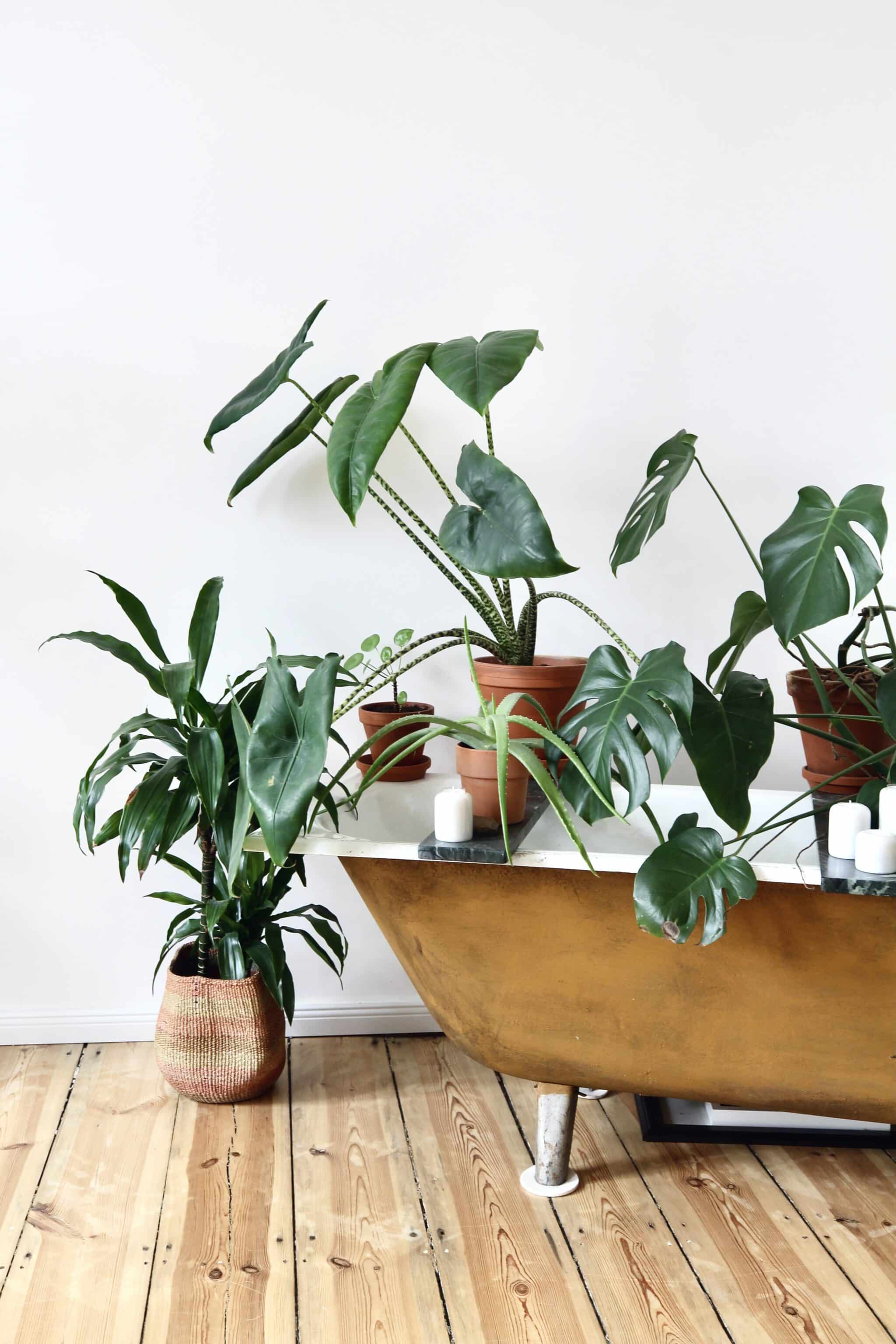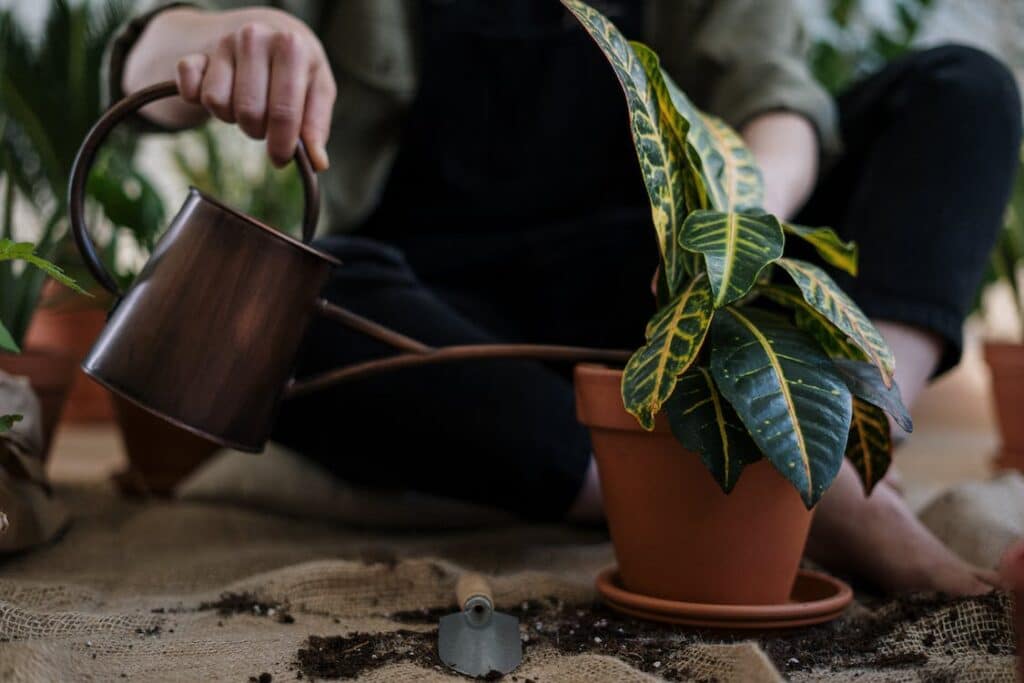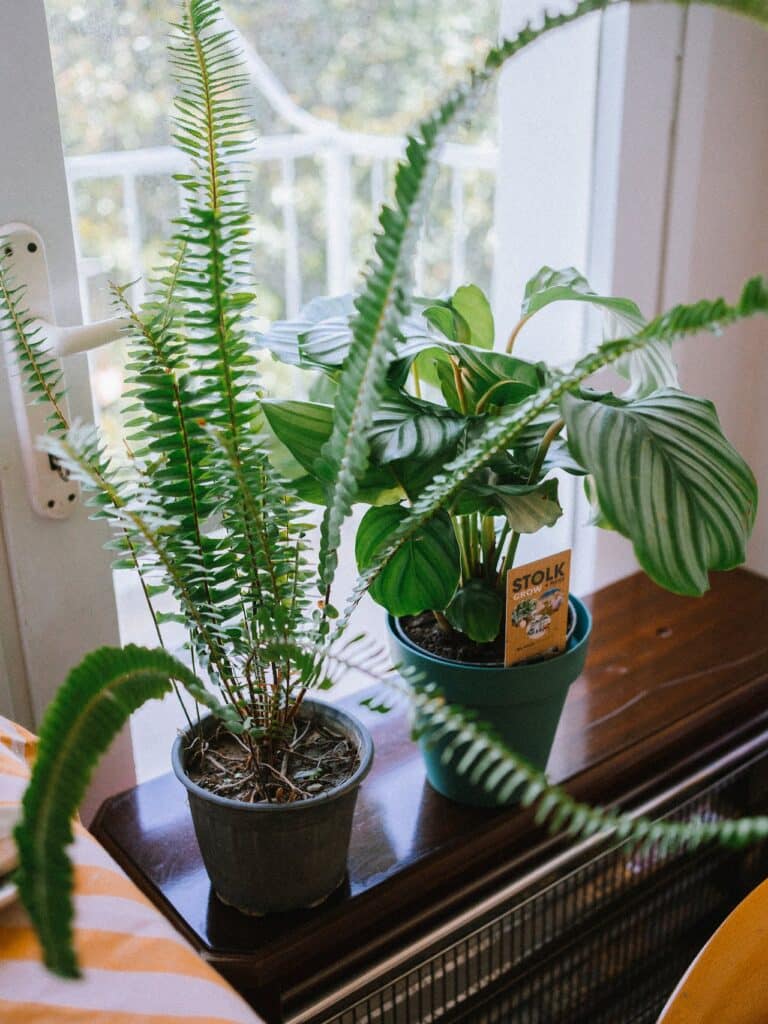Hey there! Have you noticed that your Monstera leaf turning brown? Don’t worry, you’re not alone. Many plant lovers, like yourself, often wonder what could be causing this change in their cherished Monstera plants. In this article, we’ll explore some common reasons why your Monstera leaf might be turning brown, so you can identify the problem and help your plant thrive once again. So let’s jump right in and discover the secrets behind this mysterious leaf transformation!

Understanding Monstera Plants
Monstera plants, also known as Swiss cheese plants, are popular houseplants due to their distinctive leaves and easy care requirements. These stunning plants, native to the tropical rainforests of Central America, are characterized by their large, glossy green leaves that develop unique natural holes and splits as they mature. Monstera plants belong to the Araceae family and are known for their ability to grow both as climbers and as trailing plants.
Basic information about monstera plants
Monstera plants are relatively low-maintenance and can thrive in a variety of environments. They prefer bright, indirect light and moderate humidity levels, making them perfect for indoor cultivation. These plants have aerial roots that help them climb trees in their natural habitat, but indoors, they can be trained to grow on a moss pole or trellis for support.
Different types of monstera plants
There are several popular varieties of monstera plants, each with its own unique characteristics. The Monstera deliciosa, also known as the Swiss cheese plant, is the most well-known and easily recognizable variety, featuring large, perforated leaves. The Monstera adansonii, or the Swiss cheese vine, has smaller leaves with more pronounced holes. Other varieties include the Monstera obliqua, which has extremely perforated leaves, and the Monstera karstenianum, with leaves featuring silver markings.
Ideal environment for growth
To ensure the healthy growth of your monstera plant, it is important to create an optimal environment. These plants thrive in warm temperatures between 65°F to 85°F (18°C to 29°C). It is crucial to place them in a spot with bright, indirect light, avoiding direct sunlight. Furthermore, maintaining a humidity level between 40% and 60% is beneficial for their overall well-being. Providing them with well-draining soil and regular, moderate watering will help promote their growth.
Common Symptoms of Unhealthy Monstera Plants
Despite their resilient nature, monstera plants can sometimes exhibit signs of distress. Pay attention to these symptoms to ensure you provide the appropriate care and address any underlying issues.
Signs of under-watering
When a monstera plant is under-watered, you may notice wilting leaves that appear droopy or limp. The soil may feel dry to touch, and the plant may become overall less vibrant. Under-watered monstera plants may also exhibit browning of leaf edges or develop yellow or brown spots on their foliage.
Signs of overwatering
Overwatering is a common issue that can lead to various problems in monstera plants. Signs of overwatering include yellowing leaves, mold or fungal growth on the soil surface, root rot, and a foul smell emanating from the soil. The leaves may droop or appear unusually soft, and you may even notice blackening of the stems.
Signs of light deficiency
Monstera plants require a good amount of indirect light to thrive. If they do not receive enough light, their leaves may turn pale or develop a washed-out appearance. Insufficient light can cause elongated stems, weak growth, and reduced leaf perforations.
Signs of pests
Although monstera plants are generally resilient to pests, they can occasionally fall victim to infestations. Look out for signs of pests such as spider mites, mealybugs, or aphids. These pests may leave behind webbing, sticky residue, or visible damage to the leaves, including holes or discoloration.
Signs of diseases
Monstera plants can be susceptible to diseases such as fungal infections or bacterial leaf spot. These diseases can cause brown spots or patches on the leaves, which may eventually lead to leaf yellowing or browning. It is important to promptly address these issues to prevent further damage.
Browning of leaves
Browning of leaves is a common symptom in monstera plants and can be caused by a variety of factors. Understanding the causes behind this issue will help you effectively address it and maintain the health and beauty of your plant.

Causes of Monstera Leaves Turning Brown
Several factors can contribute to the browning of monstera leaves. Identifying the underlying cause is crucial for implementing the appropriate care strategies.
Insufficient watering
One of the most common causes of brown leaves in monstera plants is insufficient watering. If the plant receives inadequate moisture, the leaves may dry out and turn brown. It is important to maintain a regular watering schedule and ensure the soil is moist but not waterlogged.
Dry air and low humidity
Monstera plants naturally thrive in the humid conditions of tropical rainforests. When grown indoors, they may be exposed to dry air, especially in heated or air-conditioned spaces. In such environments, the plant may struggle to retain moisture, leading to browning of the leaves. Increasing humidity levels around the plant can help alleviate this issue.
Poor light
Monstera plants require bright, indirect light to support their growth and overall health. Insufficient light can lead to brown leaves, particularly if the plant is located in a dimly lit area. Moving the plant to a spot with brighter light or using artificial grow lights can help address this issue.
Nutrient deficiency
A lack of essential nutrients can contribute to the browning of monstera leaves. If the plant does not receive an adequate supply of nutrients, it may exhibit signs of nutrient deficiency, such as leaf discoloration or browning. Providing a balanced fertilizer specifically formulated for indoor plants can help prevent this issue.
Excessive watering
While under-watering can cause brown leaves, overwatering can have a similar effect. Excessive moisture can lead to root rot and hinder the plant’s ability to absorb nutrients properly. This can result in yellowing or browning of the leaves. It is crucial to strike a balance and ensure proper drainage to prevent overwatering.
Overwatering as a Cause for Browning
Overwatering is a common mistake made by many plant owners, which can have detrimental effects on monstera plants. Understanding how overwatering damages the plant and being able to distinguish the signs from other causes is essential for effective care.
How overwatering damages the plant
Overwatering essentially suffocates the roots of the monstera plant by depriving them of oxygen. When the soil is constantly waterlogged, it becomes anaerobic, creating an environment where root rot-causing pathogens thrive. This leads to root damage and the inability of the plant to absorb water and nutrients properly.
Effects of overwatering on leaves
The effects of overwatering on the leaves of a monstera plant are often visible through a browning discoloration. The leaves may also become soft and mushy to the touch. Furthermore, overwatering disturbs the balance between water uptake and transpiration, resulting in waterlogged leaves that eventually turn brown and wilt.
Distinguishing overwatering signs from other causes
It is important to differentiate the signs of overwatering from other causes of brown leaves to provide the appropriate care. Conduct a careful examination of the plant’s roots and soil: if you observe rotten or mushy roots and the soil is consistently wet, overwatering is likely the culprit. Adjusting your watering routine and improving drainage can help rectify the issue.

Under-Watering as a Cause for Browning
While overwatering is a common cause of brown leaves, under-watering can also lead to this issue. Understanding the impact of under-watering and learning to distinguish its symptoms from other problems is crucial for proper care.
Impact of under-watering on the plant
Under-watering deprives the monstera plant of the necessary moisture it needs to thrive. Without enough water, the leaves and stems can become dehydrated and begin to die off. This leads to brown discoloration and wilting of the affected leaves.
Effects of under-watering on leaves
When a monstera plant is under-watered, the leaves may become dry, crispy, and brittle. They can lose their vibrant green color and develop brown patches or edges. As the water deficiency persists, the browning may spread throughout the leaves, indicating further damage to the plant.
How to distinguish under-watering symptoms from other issues
To differentiate the symptoms of under-watering from other causes of brown leaves, assess the moisture levels of both the soil and the leaves. If the soil is consistently dry, and the leaves feel crisp and have brown patches, it signifies under-watering. Increasing the frequency of watering and ensuring thorough hydration can help alleviate this issue.
Impact of Poor Light on Monstera Plants
Light plays a vital role in the overall health and growth of monstera plants. Understanding the impact of poor light conditions and taking appropriate measures can prevent brown leaves and promote thriving plant growth.
Ideal light conditions for monstera
Monstera plants thrive in bright, indirect light. Placing them near a window that receives plenty of light without direct sunlight exposure is ideal. These plants can tolerate lower light conditions, but prolonged periods of insufficient light can result in decreased photosynthesis, leading to brown leaves.
How poor light affects plant health
When monstera plants do not receive enough light, they are unable to generate sufficient energy through photosynthesis. This can negatively affect various aspects of their growth, including the development and maintenance of healthy green leaves. Inadequate light can also cause stretched-out stems and reduced leaf perforations.
Brown leaves due to inadequate light
Monstera leaves may turn brown when exposed to poor light conditions for an extended period. The lack of light causes a decline in chlorophyll production, which gives the leaves their green color. As a result, the leaves may lose their vibrancy and develop brown patches or edges. Moving the plant to a brighter location or using artificial grow lights can help prevent further browning.
Impact of Nutrient Deficiency on Monstera Plants
Providing the right nutrients is crucial for the healthy growth and development of monstera plants. Understanding their nutrient needs, recognizing the effects of deficiency, and identifying brown leaves caused by insufficient nutrients is important for proper care.
Understanding the nutrient needs of a monstera
Monstera plants have specific nutrient requirements to support their growth. They benefit from a balanced fertilizer that provides essential macro and micronutrients such as nitrogen, phosphorus, potassium, magnesium, and iron. These nutrients are essential for healthy leaf development and overall plant vitality.
Effects of nutrient deficiency
When a monstera plant experiences nutrient deficiency, it can manifest in various ways. The leaves may turn brown, lose their vibrancy, and exhibit yellowing or bronzing. Additionally, nutrient deficiencies can weaken the plant’s overall health, making it more susceptible to pests and diseases.
Identification of brown leaves due to lack of nutrients
If you notice brown leaves in your monstera plant, nutrient deficiency may be one possible cause. Assess the overall appearance of the plant and look for additional symptoms such as stunted growth, leaf discoloration, or yellowing. By providing the appropriate fertilizer and ensuring proper nutrient uptake, you can prevent further browning and aid in the plant’s recovery.
The Effects of Dry Air and Low Humidity
As tropical plants, monstera plants thrive in high humidity environments. Dry air and low humidity levels can lead to various issues, including brown leaves. Understanding their natural environment, the effects of dry air, and the link between low humidity and brown leaves is essential for proper care.
Understanding natural environment of monstera plants
Monstera plants are native to the tropical rainforests of Central America, where they enjoy consistently high humidity levels. In this environment, the air is often moist, providing an ideal condition for these plants to thrive. Replicating these conditions indoors can help maintain the plant’s health.
Effects of dry air and humidity on monstera plants
When monstera plants are exposed to dry air and low humidity, it becomes more challenging for them to retain moisture. This can result in dehydration, causing the leaves to turn brown and crisp. Low humidity can also hinder the plant’s ability to carry out normal physiological processes, leading to overall stress and reduced health.
Link between low humidity and brown leaves
The link between low humidity and brown leaves is evident in monstera plants. Insufficient moisture in the air can accelerate the evaporation of water from the leaves, resulting in dehydration. This dehydration manifests as browning, particularly on the edges or tips of the leaves. Increasing humidity levels by using a humidifier, placing a pebble tray with water near the plant, or regularly misting the leaves can mitigate this issue.
Diseases and Pest Infestation
Monstera plants, like any other houseplant, can be susceptible to diseases and pest infestations. Understanding common problems, their impact on leaf color, and identifying the signs of diseases or pests causing brown leaves is essential for timely intervention.
Common pests and diseases affecting monstera plants
Monstera plants may encounter pests such as spider mites, mealybugs, thrips, or aphids. These pests can damage the leaves, leading to browning or yellowing. Additionally, diseases like bacterial leaf spot or fungal infections can affect the overall health of the plant, resulting in brown patches or spots on the leaves.
Impact of diseases and pests on leaf color
Diseases and pests can have a significant impact on the color of monstera leaves. Infected leaves may develop brown spots, become discolored, or exhibit abnormal patterns. Pests can cause visible damage, such as holes or webbing, which can contribute to overall browning or wilting of the leaves.
Identifying if pests or disease are causing leaves to turn brown
To identify whether pests or diseases are causing the browning of leaves, carefully inspect both sides of the leaves and stems. Look for pests, such as tiny insects, webbing, or sticky residue. If there are obvious signs of infestation or infection, take appropriate measures such as using organic insecticidal soap or applying fungicides to address the issue.
Preventing Future Brown Leaves on Monstera
Prevention is key to maintaining the health and vibrancy of your monstera plant. By implementing best practices and addressing potential problems proactively, you can prevent future occurrences of brown leaves.
Watering best practices
Establish a regular watering routine and ensure the soil remains consistently moist but not waterlogged. Monitor the moisture levels of the soil by checking the top inch regularly. Adjust the watering frequency based on the plant’s needs and environmental conditions.
Proper use of sunlight
Place your monstera plant in a location with bright, indirect light. Avoid exposing it to direct sunlight, as this can cause leaf burn. Monitor the plant’s response to the light conditions and adjust its placement accordingly to provide optimal lighting.
Provision of essential nutrients
Feed your monstera plant with a balanced fertilizer formulated specifically for indoor plants. Follow the instructions provided on the packaging to ensure the plant receives the necessary nutrients. Regularly assess the plant’s nutrient needs and adjust the fertilizer schedule accordingly.
Maintaining humidity
Increase the humidity levels around your monstera plant by using a humidifier, placing a pebble tray filled with water near the plant, or misting the leaves regularly. Aim for a humidity level between 40% and 60% to mimic the plant’s natural environment.
Preventive measures for diseases and pests
Implement preventive measures to protect your monstera plant from diseases and pests. Regularly inspect the plant for any signs of infestation or infection, and promptly address any issues. Avoid over-crowding of plants, practice good hygiene, and quarantine new plants to prevent the spread of pests or diseases.
By following these preventive measures and promptly addressing any issues, you can keep your monstera plant healthy and vibrant, preventing future occurrences of brown leaves. Remember to observe and understand the unique needs of your monstera, as each plant may require slightly different care. With the right environment, proper watering, sufficient light, and regular maintenance, your monstera will thrive, displaying its stunning foliage for years to come.




